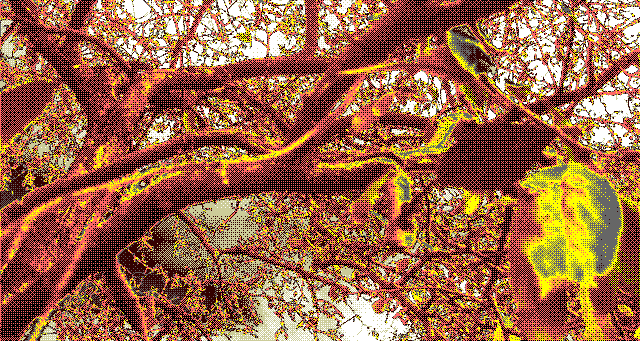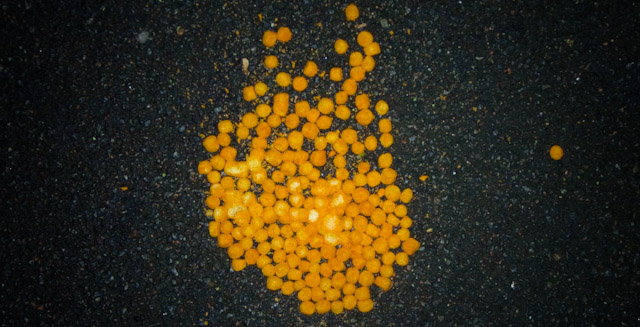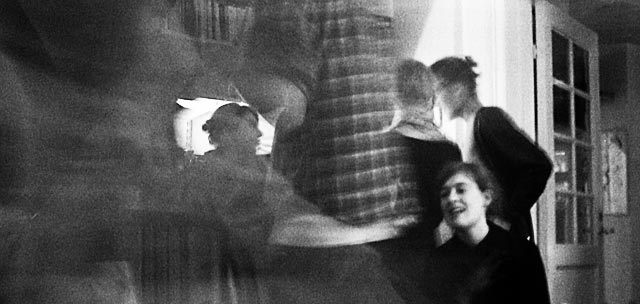For an inexplicable reason I love generative projects. Maybe it’s the appearance of magic that I like, or maybe the embodiment of an abstract idea seemingly discorporated from a human mover. A ghost in the machine for as long as you can suspend disbelief. The Perpetual Storyteller Apparatus by Julius von Bismarck & Benjamin Maus is one such project where the you could be forgiven for staring at the machine, trying to get some meaning out of its scribblings.
Because magic is about diverting your viewers attention, much of generative art leaves you trying to decipher how something is made or what the internal mechanism is. Once you realise that the stunning graphics that you see are pulsating in rhythm to a certain noise, there is little but aesthetics and perhaps admiration for the technical skill of the artist left. And while technical skills are important to have, we don’t make art to show them off but rather hope to tell a story or present information in a way or setting that is enlightening or amusing.


Back when I lived in London, I saw Scott Draves in a pub where he presented a beta of what would become the famous Electric Sheep project. By having abstract patterns — “sheep” — swap genes with each other from one online computer to another, and having users pass judgement on which sheep they liked most, an ecology of sheep was formed, pretty and less so. It’s an excellent example of a generative project where the process (strings of software that communicate and mutate while your computer is “sleeping”) gives us a new take on computers and their relationship to each other, while the end product speaks leagues of the end users aesthetic sensibilities. (The individual sheep which we’ve voted up or down, thereby influencing their reproductive ability)
But this is an old project, epochs ago in Internet years, and I have a hard time finding interesting generative art made today. I’ve been poking a bit at Processing, a programming language geared towards artists and similar folk, which is perfectly suited to take any data and muck about with it. Since it’s relatively simple and accessible it has generated a lot of projects that are half baked and conceptually weak; This is fine as long as we view the projects as stepping stones, as experiments in visualisation. But it’s so easy to get stuck with fiddling the knobs of random parameters that you end up spending you time changing hues instead of a coming up with a reason for why you’re doing it in the first place.
In the time of Flash 1.0 I was in awe of what Joshua Davis was doing over at Praystation.com, and most of that was only him fiddling with autonomous processes and the possibilities of Actionscript. Today we have Flickrvision and We Feel Fine, which take their data from the cloud and present them in a new way. This is good stuff, but it’s the exception to most other art or “new media” projects that show up. Computer art too often lacks either in technology or theory, and it ages miserably.
(My mum stopped accepting “hand-made presents” some time ago, so one should hope that artists would be self-critical enough not to show every ashtray they’ve created.)

But perhaps there is a truth to get at behind a generative, or random, process (not that the two are interchangable, but they are similar enough for this topic) if by a “controlled randomness” we utilise a background noise to decide the outcome. Maybe it reveals an underlying truth about the universe or somesuch. That would certainly be in line with numerology and astrology; Trying to discern a pattern. Perhaps the cosmic microwave background radiation is interferring with our world and by looking long enough at the noise of a tv showing static we discover the pattern of God. The movie Π comes to mind, as does the ramblings of any number of nutters who’ve stared into the sun long enough.
I’ve included this here mostly for completeness sake and because it’s an old and interesting sci-fi idea: If the universe is deterministic there can be no true randomness. The “real” that shines through, the almost invisible hand of the maker, will show in everything — why it should appear more in “beautiful” works of art is another matter — and there is a Truth in there. Thank Goodness for the uncertainty principle I say. There is randomness, so there doesn’t have to be a pattern for us to find, and maybe what we enjoy is randomness. Whatever.
What Duchamp did with his 3 Standard Stoppages was interesting because it spoke about our relationship to art. It’s not the result, nor the process in itself that was interesting, but audience going “oooh” at the audacity.
So a goal of using magic where you are allowed to see what the magician is doing could be that the end result is valuable, not the process itself. Someone mixing flour, yeast, water and salt will make a bread – itself an extraordinary transformation of the starting material – but they’re not doing it because the process is awesome but because bread is a good thing. And it’s not art, or at least not interesting art; The latter is a worse offence.
[flv:https://monocultured.com/blog/blog_video/Delinquest_sleep_logo.flv https://monocultured.com/blog/blog_video/Delinquest_sleep_logo.png 640 360]
In the above video, made for Delinquest, I dick around with After Effects: The horizontal blur reacting to the music. I haven’t made the effect, but I control the parameters. It’s a nonsensical example, but still an example of a generative process. It always starts with someone telling someone else to do the work, and then you end up with instructions being the work and suddenly you’re back at the screen, watching the iTunes visualizer, experiencing beauty like a child and patting yourself on the back for choosing this particular song.
I’m not saying the end product is irrelevant or – heaven forfend – isn’t art, but one has to realise that even though aesthetics can be appreciated as something good, they’re not a discreet phenomena but at one end of a sliding scale which has “abstract beauty” at the other end. Or maybe “being a smart-ass.”
